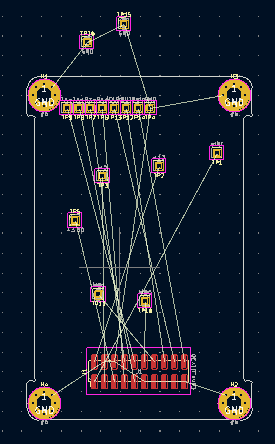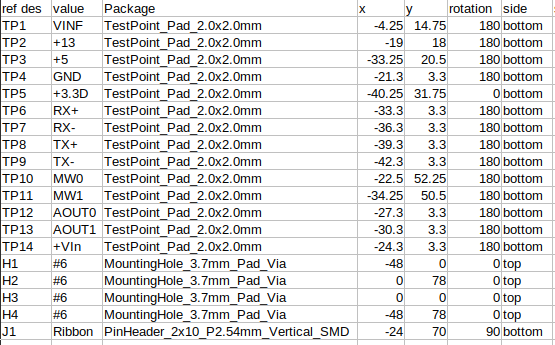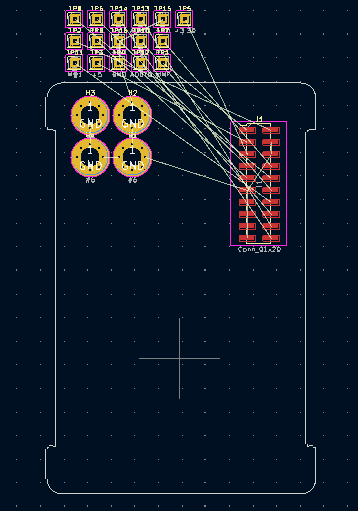kicad-parts-placer
Categories:

New Tool: kicad-parts-placer
Manually positioning critical components for a design such as pogo pins for test fixtures can be tedious and error-prone. kicad-parts-placer simplifies this process by automating exact batch placement of parts in KiCad layouts using just a centroid files.
This Python tool groups components and moves them as a single unit, ensuring perfect alignment and maintaining fixed spacing. It’s ideal for creating bed-of-nails testers, aligning mounting holes, connectors, sensors, and preserving form factors across designs.
Try it out and contribute! repo: https://github.com/snhobbs/kicad-parts-placer.git
Edit
Also available as a plugin here and in the KiCad PCM.
Key Features
- Place components exactly according to centroid position data
- Group components to maintain relative positions during placement
- Simplify mechanical alignment and form factor matching
- Compatible with KiCad PCB files and simple CSV configuration files
- Useful for:
- Creating bed of nails tester
- Positioning mechanically important parts
- Maintaining a form factor across different designs
How It Works
- Export centroid data from your existing KiCad design (or other CAD software)
- Edit centroid CSV to include pogo pin footprints, mounting holes, connectors, and other mechanical components
- Batch load parts into a KiCad schematic with matching reference designators
- Update your PCB from the schematic (press F8 in KiCad)
- Run kicad-parts-placer to move components to their exact positions on the PCB layout
kicad-parts-placer --pcb example-placement.kicad_pcb \
--config centroid-all-pos.csv \
--out example-placement_placed.kicad_pcb \
-x 117.5 -y 53
The result is a PCB layout with the selected parts perfectly positioned, ready for routing or fabrication.
Example Project
Check out the example placement project for a detailed walkthrough. It includes:
- A centroid file edited for pogo pin placements
- A schematic with matching references
- Exported PCB before and after running the placement script

A schematic is drawn up with matching reference designators:
The schematic is exported to a PCB which will look like this:


Additional Notes
- Connections between parts are handled via schematic netlists or can be manually updated after placement
- Supports locking group positions to simplify footprint handling
- Allows adding metadata for documentation or board outline integration
- Useful for maintaining test fixture compatibility across multiple board revisions
Installation
PyPi
All you need to run is:
pip install kicad-parts-placer
Source
To install from source:
git clone https://github.com/snhobbs/kicad-parts-placer
cd kicad-parts-placer
pip install .
References
- OpenSCAD test jig generator: https://tinylabs.io/openfixture-config/
- Manual KiCad location extraction: https://tinylabs.io/openfixture-kicad-export/
- Hackaday test jigs: https://hackaday.com/2016/08/24/tools-of-the-trade-test-and-programming/#more-218337
- https://www.testjigfactory.com/
- https://climbers.net/sbc/home-lab-pcb-programming-test-jig/
- KiCad schematic to pcb position: https://github.com/ian-ross/kicad-plugins